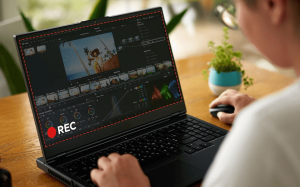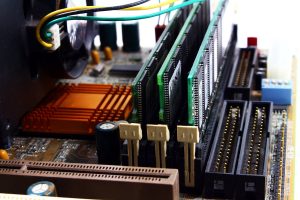The Future of Laptops

The laptops commonly used today are a far cry from the ones that were initially introduced. As with most technological devices, laptops have evolved significantly especially in recent years. Given all of these changes, many wonders just what the laptops of the future will offer.
The traditional clamshell-shaped device has evolved with the popularity of tablets. Many of today’s laptop models can work as either a laptop or can be converted into a touchscreen tablet. Smartphones have made touchscreens popular and this characteristic has melded into today’s laptops as well. Laptops today have also evolved in terms of size. While some users don’t want to compromise screen size, the thickness of laptops has decreased making them lighter and easier to take on the go as laptops are designed to do.
Laptops of the future could be operated differently than those of today. Consider having one that is voice controlled or maybe facial gestures can be used as is the case with a Samsung Smart TV. This would necessitate the inclusion of multiple cameras within the device to detect even the subtlest gestures. More than likely the next generation of laptops will have upgrades aimed at improving overall performance. For instance, battery life is always a big concern when purchasing a laptop. While engineers can design more efficient batteries, they can also make laptops capable of using less power overall which will preserve power. Their size makes them useful to be portable so being able to be used without connecting to a power source is key. Screen resolution is always a concern with users wanting realistic graphics, especially gamers. The laptops of the future may even look at providing multiple screens, maybe as many as three.
Mobile devices have provided competition for the laptop industry. Expect to see more and more of their capabilities being adapted for use with a laptop. However, one feature that won’t replace a laptop is the keyboard. While typing on a touchscreen keyboard is possible, it simply isn’t as efficient as using a traditional keyboard. The mouse has evolved into a built-in touchpad but doesn’t expect it to stop there. Imagine using eye control to move the cursor across the screen. This could be an option in the future, freeing up one’s hands. By fine-tuning eye tracking technology, this very well could be a reality soon. When we think of the laptop of the future, we may see devices that are much more perceptive.
Much of the technology we have today wasn’t even fathomable before its creation so there will likely be many other laptop advancements that consumers haven’t even considered.
A year and a half ago the Lenovo Yoga Book excited us all to bring such a brave and original concept. We said goodbye to the traditional format of the laptop to greet a team in which the keyboard was replaced by a multifunctional touch surface.
Now that idea goes further, because both the ASUS – “Project Precog” and the second generation Lenovo Yoga Book are laptops that have two touchscreens, one of which can precisely operate as a second screen or display a virtual keyboard for text input and, if we wish, a touchpad.
The company has also put a lot of emphasis on the integration of artificial intelligence in the team, although its role is limited: it allows recognizing touch devices to adjust the experience at any time or change the location of the keyboard depending on the place where the user place your fingers. What will the future hold? Your guess is as good as anyone’s.






